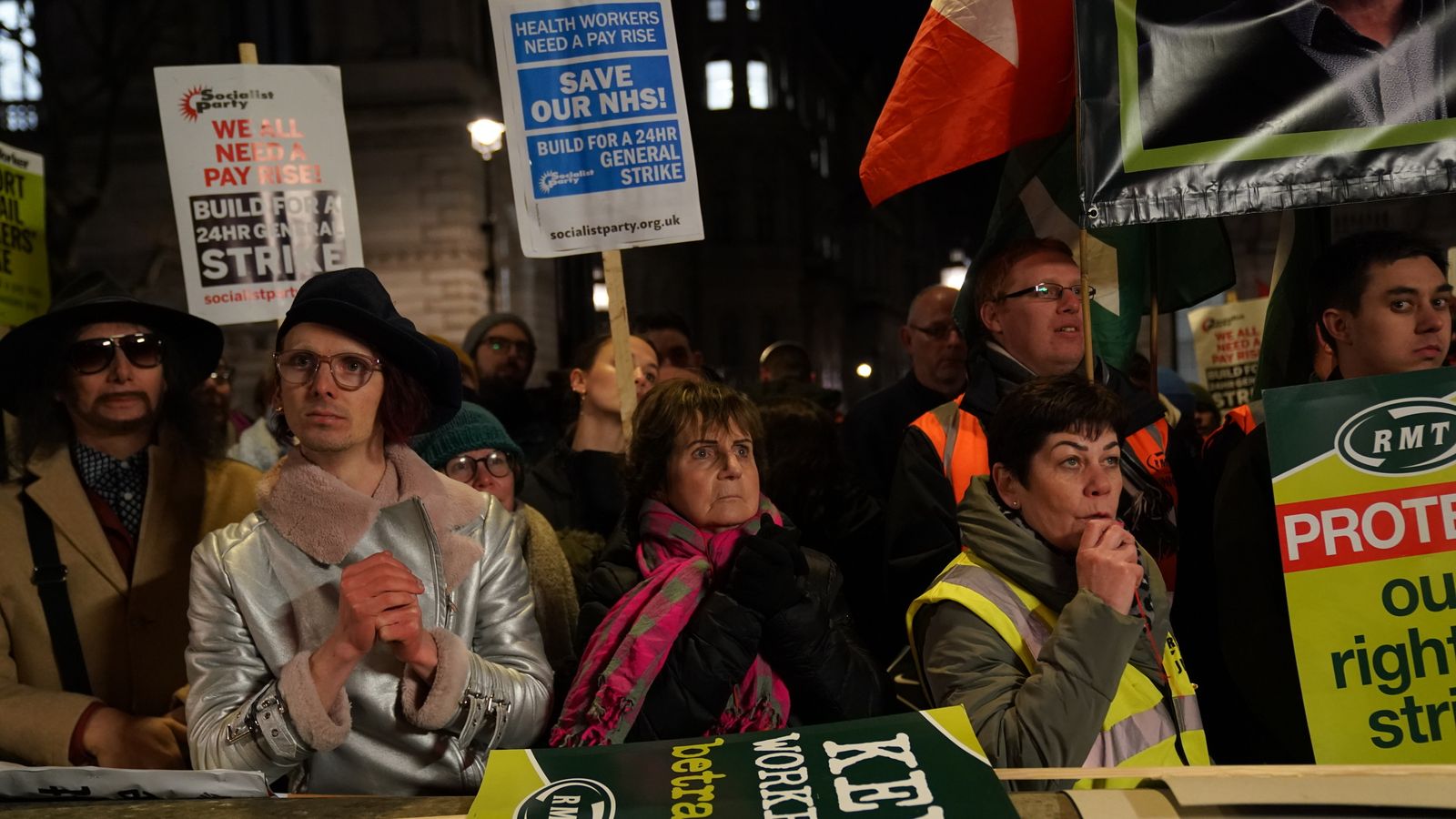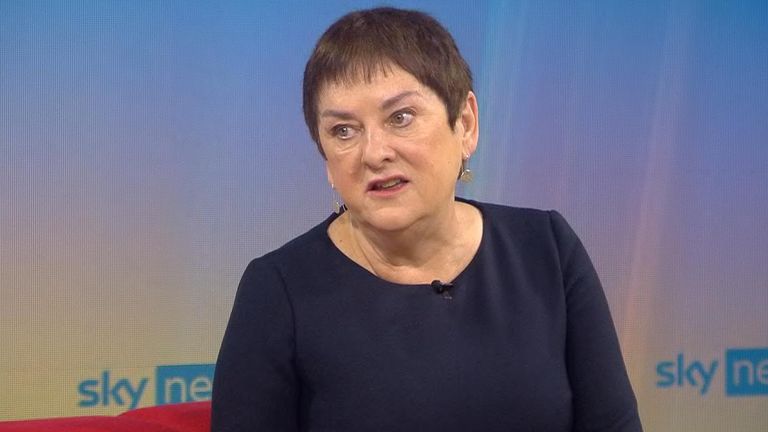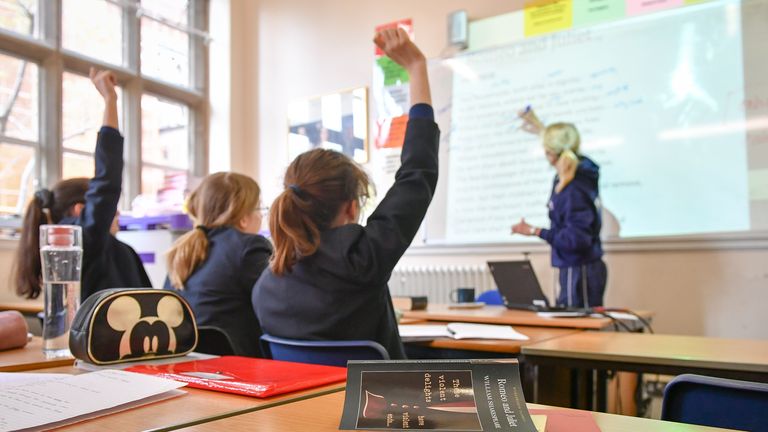The third Monday in January is coined “Blue Monday” because it is supposedly the most depressing day of the year, due to the combination of bad weather, stretched finances and broken new year resolutions.
And this particular Blue Monday has brought on an extra dose of misery, bringing with it more strikes in our NHS and now our schools.
The Royal College of Nursing announced there would be two further days of industrial action on 6 and 7 February in England and Wales, to add to their strike days on 18 and 19 January.
Meanwhile, the GMB union also met to discuss further ambulance strikes with its members.
A decision will be made public on Wednesday, but the mood music from meetings today wasn’t good and I expect another round of ambulance strikes to be announced, with a possible six extra days of industrial action.
“There’s a huge amount of anger from our members working in the ambulance service and from the representatives that (health secretary) Steve Barclay is not taking this seriously,” the GMB told me on Monday.
“Our members will not back down in this fight and they need Steve Barclay to actually take them seriously.”
On top of that, teachers have also voted overwhelmingly in support of strike action in their dispute over pay, which is likely to result in the closure or partial closure of a vast majority of schools in England and Wales on 1 February when there is a mass walkout of staff, with further national strike days planned for 15 and 16 March.
It is the worst industrial action since the 1980s and the strike days keep rolling in.
Treasury insiders insist that the chancellor is not going to reopen pay negotiations.
“We have committed to halving inflation this year. High inflation is the root cause of industrial unrest,” one Whitehall figure told me. “We can’t risk doing anything that might disrupt that goal.”
Meanwhile, a senior Number 10 source told me the government has “mentally prepared everyone [in the country] that this might be long term” and the contingency plans in place mean the impact of the strikes hasn’t been as bad as perhaps officials feared.
So far, so blue. But is the government sticking to its guns really sustainable?
Justine Greening, a former Conservative MP and cabinet minister, pointed out to me on Monday night that the issues around pay are also a labour market problem which the government, she thinks, will eventually have to enter.
Read more:
Strikes – who is taking action and when
Thousands of teachers to strike over ‘toxic mix of low pay and excessive workload’
Take teachers: there are huge shortages in areas such as STEM subjects (science, technology, engineering and mathematics), with demand for graduates in those areas far outstripping supply in a tight labour market.
“In the end, the government are going to have to get round the table and reach an agreement,” Ms Greening said. “They are recruiting in a wider market and that is going to have to be taken into account.”
Meanwhile, there are some glimmers of hope that this “winter of discontent” could perhaps give way to some sort of compromise in the coming weeks, if all sides shift a little.
When it comes to rail strikes, talks are continuing this week between the rail industry and the RMT union amid renewed optimism that a deal can be reached without further industrial action after a four-week period of strikes either side of Christmas. Talks are set to continue in London on Tuesday.
And when it comes to nurses, there is a sense in government that the mood music is shifting after ministers’ positions moved from absolutely no compromise to talking about options and the Royal College of Nursing unofficially dropped its 19% pay demand to 10%.
While the government will not, as the unions want, reopen the pay deal for the year to April 2023, there is talk about how “productivity gains” in the NHS could help top up pay, while creative solutions to a pay deal are being floated.
One is to offer nurses a one-off pay award – perhaps up to £1,000 – to help ameliorate the inflation hit without bedding an extra pay rise into salaries.
Another idea is to ensure the pay rise for 2023/24, normally decided in April, kicks in then rather than in August as it normally does, ensuring nurses get the benefit immediately.
A final suggestion is to backdate the April 2023 pay rise to January, effectively giving nurses a three-month pay rise in order to offset the inflationary hit while allowing the government to say it hasn’t re-opened the 2022/23 pay deal.
All of these options have been floated in talks between the unions and the health secretary.
But the decision isn’t Steve Barclay’s, it belongs to Prime Minister Rishi Sunak and his chancellor, Jeremy Hunt, with the latter no doubt insisting that any additional pay rises should be found from the additional £6.6bn over two years that he awarded the NHS in last November’s autumn statement.
In the meantime, as the talks go on, the government is pushing new minimum service level laws through the House of Commons to ensure, in the words of Business Secretary Grant Shapps, that the government can “protect the ability of workers to take industrial action, but it will also protect the public from disproportionate disruption to their daily lives”.
He added: “To put it simply, one person’s right to strike doesn’t infringe on someone else’s right to life and limb.”
But on nurses’ strikes at the very least, the public are very much on the side of the health professionals over the politicians, while unions are warning that strike legislation is unworkable and will only serve to lengthen disputes by further straining already tense relations between the unions and government.
And if the bill does become law, the Trades Union Congress thinks it will have grounds to challenge the new legislation through the courts.
All the while, the continued strikes leave the country with the sense that the wheels are coming off the basic services that citizens expect, which is uncomfortable for a new administration that promised to do less politics and more governing.
Number 10 insiders insist that what would look worse for the new prime minister would be to risk the country’s finances by paying public sector workers more and potentially further stoking inflation.
But in this stand-off, it seems like the prime minister, already 20 points behind in the polls, has more to lose as the strikes, and the public discontentment, pile up.



